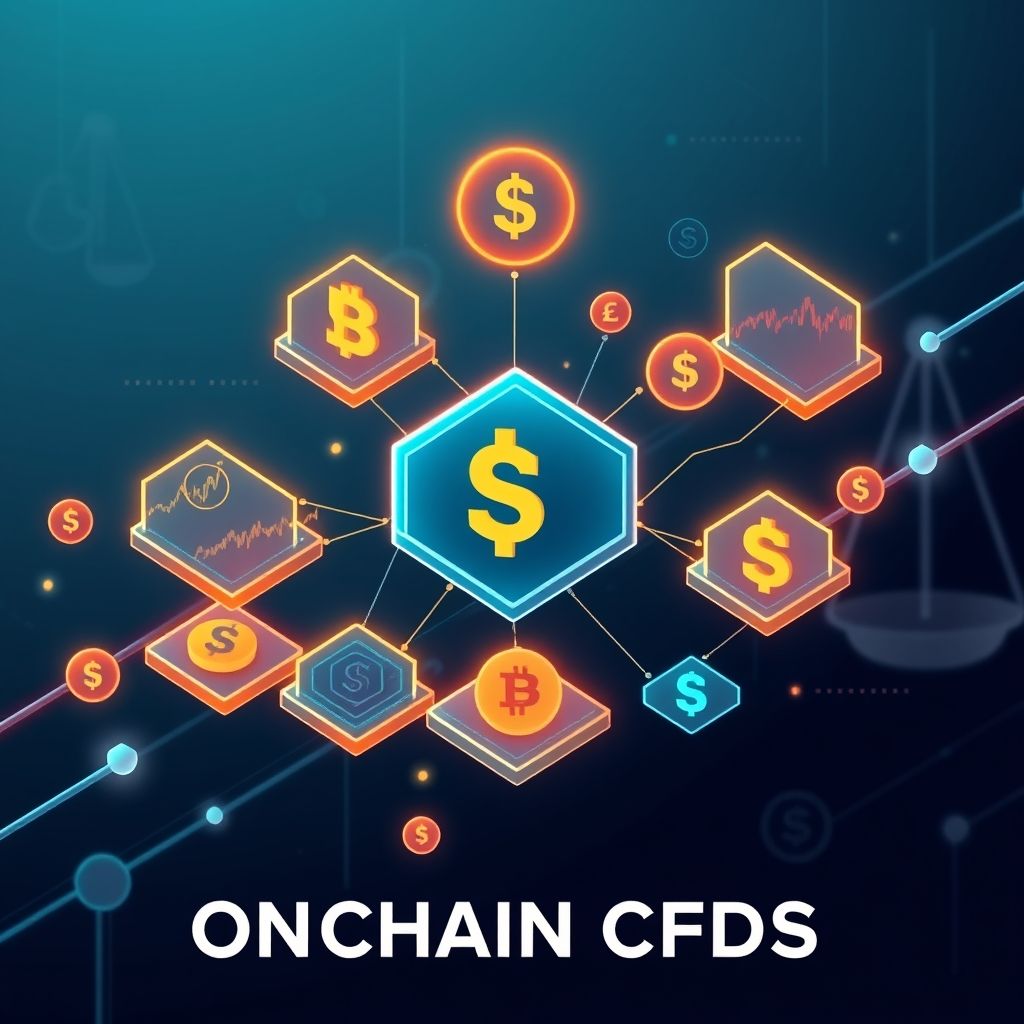Are on-chain CFDs regulated?
Are On-Chain CFDs Regulated? What You Need to Know
Imagine a world where tradable assets—forex, stocks, crypto, commodities—all sit comfortably in a decentralized playground, guided by smart contracts and blockchain tech. Sounds futuristic? Well, it’s happening now with on-chain Contracts for Difference (CFDs). But here’s the kicker: Are they regulated? That’s the question on many traders’ minds, and for good reason. In a space where transparency and security are essentials, understanding the regulatory landscape is a must.

On-Chain CFDs: What Are They Exactly?
Let’s start with the basics. Traditional CFDs are derivative products that allow you to speculate on the price movements of various assets without owning the actual asset. Now, throw in blockchain technology: on-chain CFDs are essentially smart contract-based agreements that mirror this concept but run directly on decentralized networks.
Think of it like placing your bets on the Ethereum blockchain instead of a shady offshore broker. The smart contract acts as an impartial referee—your trades are executed automatically when certain conditions are met, with transparency baked into the protocol. That’s a game-changer, especially when it comes to reducing counterparty risk and increasing trust.
The Regulation Question: Are On-Chain CFDs Losing Myself in the Fine Print?
Here’s the deal: regulation in traditional finance aims to protect traders and ensure fair play. When it comes to on-chain CFDs, regulation is a bit murky. Since these instruments operate across various jurisdictions and often on decentralized platforms, they don’t always fall under the umbrella of existing financial authorities like the SEC or FCA.
Some platforms claim to be compliant, implementing Know Your Customer (KYC) and Anti-Money Laundering (AML) protocols, but others operate in legal grey areas. The European Union’s Markets in Crypto-Assets (MiCA) regulation is trying to bring more clarity, but global consistency is still a work in progress.
It’s similar to riding a wave—you can enjoy the thrill, but sometimes the undertow can pull you unexpectedly because the currents aren’t clearly marked.
Advantages of On-Chain CFDs in Web3 Finance
There’s a lot to like—if done right. On-chain CFDs unlock a level of transparency that traditional brokers can only dream of. Every trade recorded on the blockchain leaves an indelible trail—this means no more opaque pricing or suspicious slippage.
Plus, they open the door for a wider array of assets to be traded in one place. From forex to stocks, crypto, indices, commodities—you can diversify your portfolio like never before, all with a single platform built on the blockchain.
What’s more, with decentralized finance (DeFi) protocols, the usual middlemen are cut out. Imagine no hefty commissions, more privacy, and the ability to trade 24/7 without traditional market hours getting in the way. That’s the promise of this new era.
Risks and Pitfalls to Keep in Mind
Of course, it’s not all smooth sailing. The regulatory ambiguity means some platforms might operate with less oversight, raising risks around security and fraud. Leverage trading, in particular, is a double-edged sword—magnifying profits but also amplifying losses. Traders should be cautious, start small, and understand the protocol’s risk controls.
Scaling solutions like layer-2 protocols are helping reduce transaction fees and speed up trades, but some blockchain networks still face congestion issues. For traders, it’s about balancing the advantages of decentralization with practical considerations like network stability and custody.
The Future: AI, Smart Contracts, and Decentralized Trading
Looking ahead, the on-chain CFD landscape is poised for a revolution. Think about AI-powered trading bots reacting in real time, executing trades based on complex data—integrating seamlessly with smart contract protocols. Virtual assistants could call out market signals, alerting traders instantly.
Smart contracts will become even smarter, adapting dynamically to market conditions. The integration of decentralized Oracles—trustworthy feeds of external data—will enhance the accuracy of prices and reduce manipulation risks.
Despite these advancements, challenges like regulatory inconsistencies, security concerns, and mainstream adoption hurdles remain. But if history is any guide, innovation tends to find a way—becoming more secure, accessible, and integrated with our daily lives.
Final thoughts: Embracing the Web3 CFD Revolution
Whether regulatory frameworks catch up or not, on-chain CFDs are transforming how we perceive and engage with financial markets. They offer a glimpse into a future where trading is more transparent, accessible, and adaptable to your needs.
Trading in this space demands mindfulness—understand the risks, use reliable platforms, and leverage the cutting-edge tech at your fingertips. As decentralized finance continues to evolve, the question isn’t just “Are on-chain CFDs regulated?” but “How will regulation shape this exciting frontier?”
Get ready, because the next chapter in finance might just be written on the blockchain. Let’s ride this wave together—safe, smart, and always ahead of the curve.